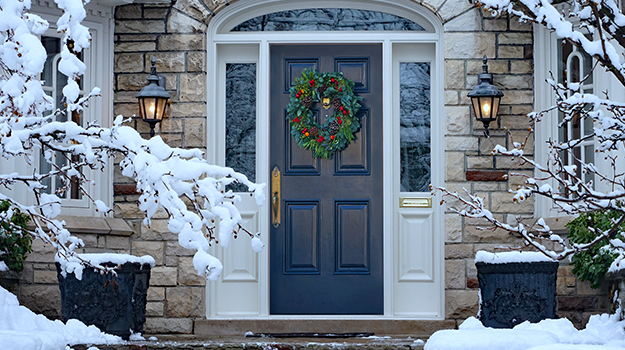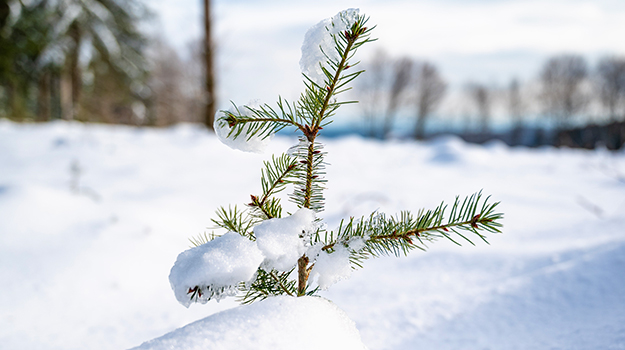Preparing your garden for the cold season isn’t only about protecting plants from the bad weather. There are also many ways to create a stunning show and enjoy it all winter. Even when the frost has taken the last flower and the wind has brought down the last leave, it’s still possible to create magic in the garden.
Trees and shrubs that keep their leaves in winter
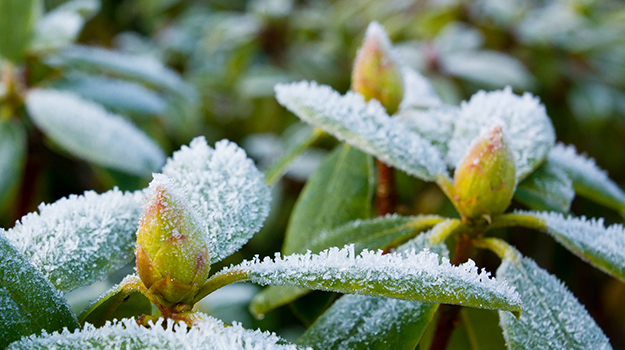
It’s not just conifers that stay green all year round… (By the way, did you know larches turn yellow and lose their leaves in the fall?)
Evergreens retain their appearance through the whole year. Some have colourful foliage, others flower in the spring or produce small fruits in the fall. However, they become particularly interesting in winter, when the plants around them have lost their appeal and the landscape isn’t as lively.
In winter, their sap thickens and circulation slows down. Focus is on the supply of minerals and sugars, which act as antifreeze to protect them.
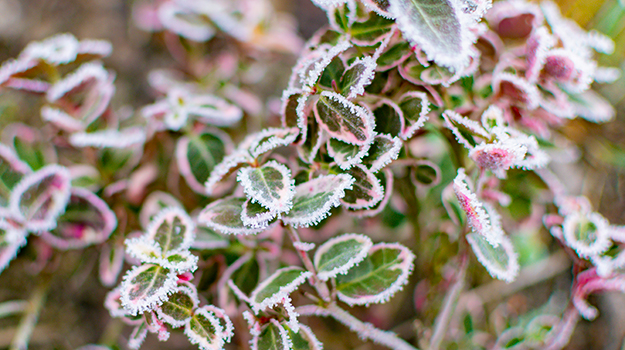
Our favourites:
- Rhododendron
- Colorado spruce
- Wintercreeper
- Hollyleaved barberry
- Emerald Green cedar
- Blue holly
- Yucca
Decorative branches in the spotlight
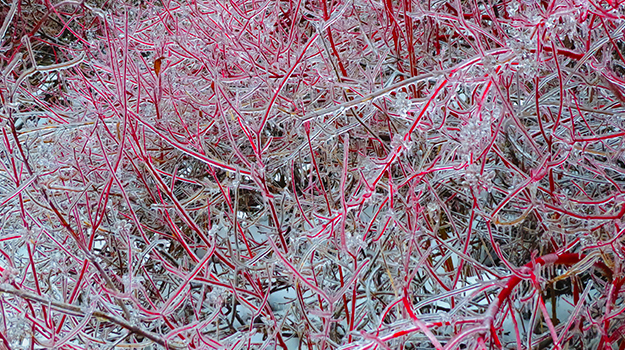
Once their foliage has fallen, many dogwoods and certain willows reveal brightly coloured stems. Their red, orange, yellow or salmon colour brightens up snowy landscapes.
Also far from being banal, the Japanese rose, the Twisty Baby locust tree and the corkscrew willow display elegantly zigzaguing branches in winter.
Decorative fruits
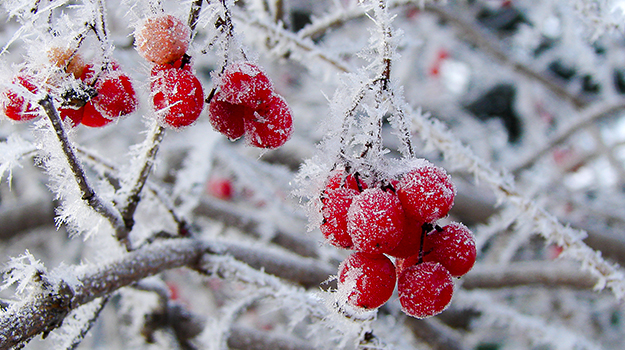
We like plants whose fruits stay attached to the branches for a long time, sometimes until spring. This is the case for the American cranberrybush, the snowberry, the American mountain ash, several crabapple trees and rough roses.
While most of these fruits are red or orange, those of the snowberry are white.
Adding these plants allows us to admire the birds that have stayed for the winter and it’s a great way to help them get through it.
Dried flowers and fruits
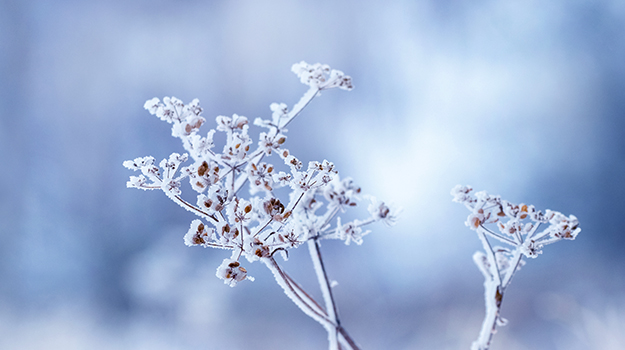
When we prune perennials, compost annuals and cut dried flowers, we deprive the garden of sumptuous golden, burgundy or copper tones during the winter.
Some dried flowers are especially attractive:
- Grasses
- Sedums with purple-toned blooms
- Hydrangeas with oversized flower clusters
- A wide variety of perennials, including irises, daylilies and crocosmias, with their decorative pods
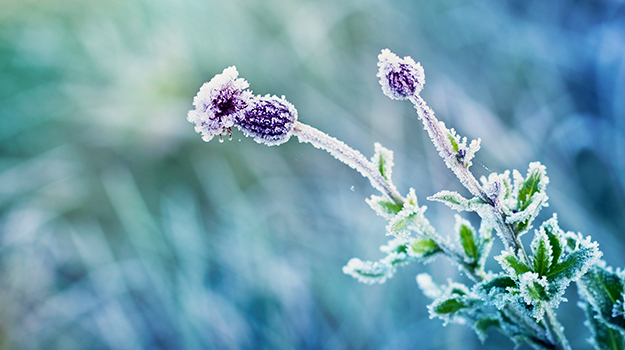
This way, the seeds can mature and give birth to new plants, without requiring any intervention. A great way to grow the garden effortlessly. Finally, withered stems add texture to the landscape and provide shelter for beneficial insects, and the seeds feed the birds.
TIP: Some perennials reseed easily, others not so much. However, even peonies can reproduce when they’re not deadheaded. The new cultivar will be different from the mother plant, but it’s sure to be a pleasant surprise!
Birds in the yard all winter
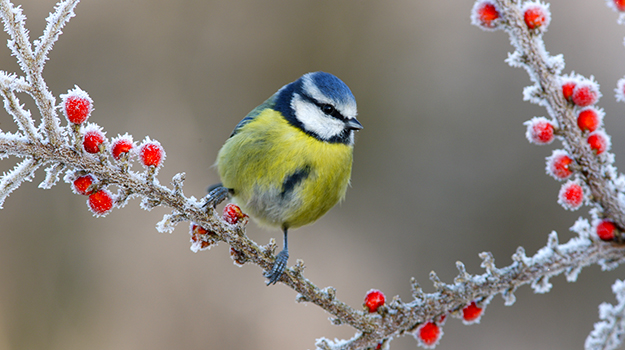
Your trees and shrubs do not produce persistant fruits in winter? Install bird feeders! They will liven up the garden while adding colour and movement. You could also hang suet blocks to branches to attract new species such as woodpeckers.
It is not recommended to use bird baths in winter as it could be fatal to birds when the weather is too cold. A heated water fountain is a great alternative.
Lighting in the garden
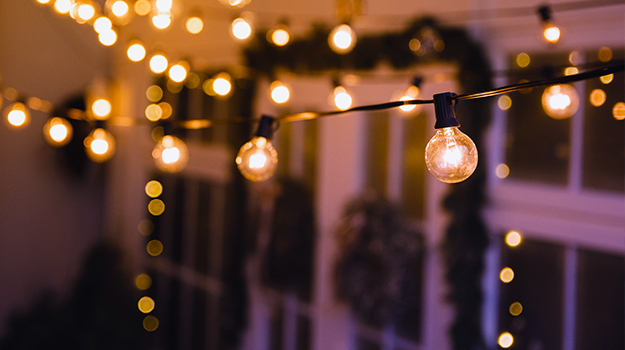
The addition of light guarantees a magical spectacle when night falls. Go to garage sales to stock up on Christmas lights. Wrap them around trees and shrubs. Hang string lights too!
Sumptuous in winter, permanent lighting is also a great idea to showcase your garden’s features all year round. Opt for soft lighting in several zones instead of bright, localized lighting. As in nature, subtlety is an invitation to contemplation.
Warm tones are also preferred. Lighting below 3,300 degrees Kelvin will be more natural and softer on your eyes.
Try light bulbs from older generations. They give off a lot of heat and melt the snow. They’re sure to create a striking effect!
For more ideas on how to bring light to the garden, read our article: Lighting in the garden: 10 bright ideas to extend the summer days
What about winter protection?
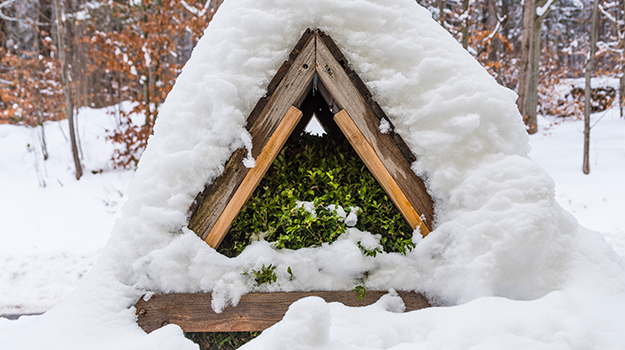
If you don't want unsightly winter protection to spoil the show, opt for plants that are well acclimatized to your region and which do not require any (except maybe for the first few years). This will also save you time and money.
If winter protection is an absolute necessity, here are a few tips to ensure it blends in more naturally with your decor:
- Match the colours of materials.
- Choose natural materials with neutral colours, such as wood or burlap.
- Use green netting with conifers for a tone-on-tone effect.
- Low, white-coloured protection such as cones will quickly disappear under the snow.
- Cover the more fragile perennials with conifer branches. They will catch the snow and provide insulation, and they’re pleasing to the eye.
To learn when and how to install your winter protection, read our article:
Tips for protecting your plants during winter
Make plans!
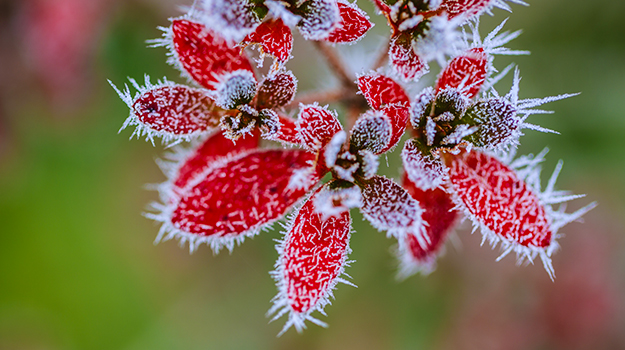
Winter is an opportunity to rethink the garden differently. With its serenity and neutral tones, it’s easier to distinguish the landscape’s features.
The perfect time to plan a garden that will be stunning all year round!

